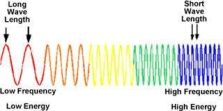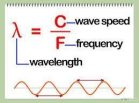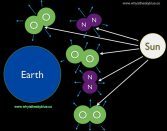Sunlight or white light of the sun is made up of all the colors of the rainbow:
red, orange, yellow, green, blue, indigo and violet. Light is a wave, and each of these colors corresponds to a different frequency, and wavelength.



When the sunlight from the sun enters the earth’s atmosphere, it collides with gas molecules. The earth’s atmosphere is a mixture roughly of 78% nitrogen gas molecules and 21% oxygen gas molecules and 1% anything else. It is mostly the nitrogen and oxygen gas molecules present in the atmosphere that interact with the sunlight before it reaches our eyes. These molecules scatter the light. As both the molecules are of same size, they scatter the sunlight in the same way.

The gas molecules in the atmosphere scatter the higher-energy (high frequency) blue portion of the sunlight ten times more than they scatter the lower-energy red portion of the sunlight because gas molecules are bigger in size than the shorter wavelength blue portion of the sunlight. Therefore the sky appears blue.
Example: We see black color because black color absorbs all colors of the light and reflect none and we see white color because white color reflects all colors of light and absorbs none and we see blue color because blue color absorbs all colors of light except blue portion of the sunlight which it reflects and so on. We only see that color which is reflected.

Violet light has an even shorter wavelength than blue light. The gas molecules should scatter more of the violet light than the blue. So why isn’t the sky violet? The gas molecules do scatter the short wavelength portion of the light i.e., violet portion and technically the color of the sky should be bluish
purple, but as the cone cells in our eyes are not very sensitive to violet color, therefore we see the sky blue.

When the sun is on the horizon (sunrise or sunset) its light takes a longer path through the atmosphere to reach your eyes than when the sun is directly overhead. By the time the light of the setting sun reaches your eyes, most of the blue light has been scattered out. The light you finally see is reddish orange.
Above the earth’s atmosphere, the sky is black because of no gas molecules. Note: Size of atomic particles plays part in this natural phenomenon!
Zia Ahmed Khan
email: khanziaahmed50@gmail.com
xxxxx